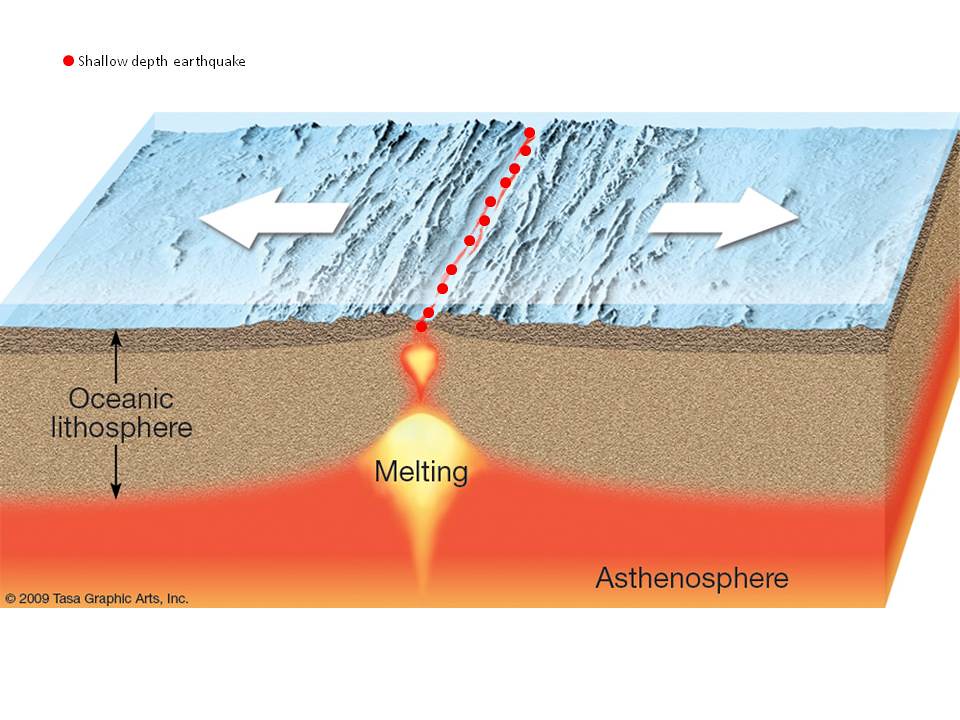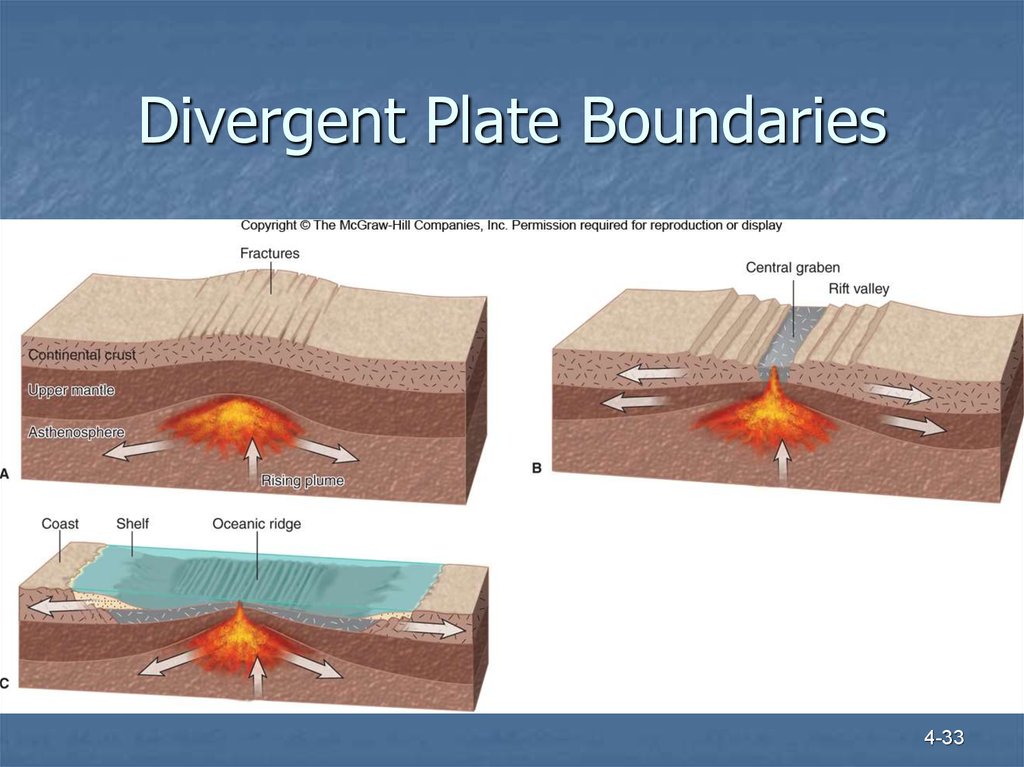


Geomagnetic mapping showed large, alternating "magnetic stripes" in the seafloor, a result of Earth's ever-changing paleomagnetism. The study of mid-ocean ridges helped establish the theory of plate tectonics in the 1960s. Fast-spreading ridges like the East Pacific Rise make more magma and lack rift valleys. They have relatively little magma production so that the ridge crest can develop a deep dropped-down block, a rift valley, at its center. Slow-spreading ridges like the Mid-Atlantic Ridge have steeper-sloping sides because it takes less distance for their new lithosphere to cool. Plates diverge at a wide range of speeds, giving rise to differences in spreading ridges. This is where the famous black smokers of the deep seafloor are found. On the crest of each ridge is a line of volcanic activity.

The slope on the flanks of a ridge means that diverging plates get an assist from gravity, a force called "ridge push" that, together with slab pull, accounts for most of the energy driving the plates. The ridges are only a few kilometers high but hundreds wide. This is why divergent zones take the form of long, wide swells running along the ocean floor: mid-ocean ridges. As it cools it shrinks, thus the fresh seafloor stands higher than the older lithosphere on either side. Jack0m / DigitalVision Vectors / Getty ImagesĪt oceanic divergent boundaries, new lithosphere is born hot and cools over millions of years. This magma then freezes onto the trailing edges of the diverging plates, forming new Earth. The melted portion expands (as melted solids generally do) and rises, having nowhere else it can go. This process is called adiabatic melting. As the pressure eases on the deep rocks, they respond by melting, even though their temperature may not change. In divergent zones, this pulling motion uncovers the hot deep mantle rock of the asthenosphere. The main force driving this plate motion (although there are other lesser forces) is the "slab pull" that arises when plates sink into the mantle under their own weight at subduction zones. In divergent zones, the plates are pulled, and not pushed, apart. The vast majority of divergent boundaries are found in the ocean, where they were not mapped or understood until the mid-to-late 20th century. Divergent boundaries exist where tectonic plates move apart from each other. Unlike convergent boundaries, divergence occurs between only oceanic or only continental plates, not one of each.


 0 kommentar(er)
0 kommentar(er)
